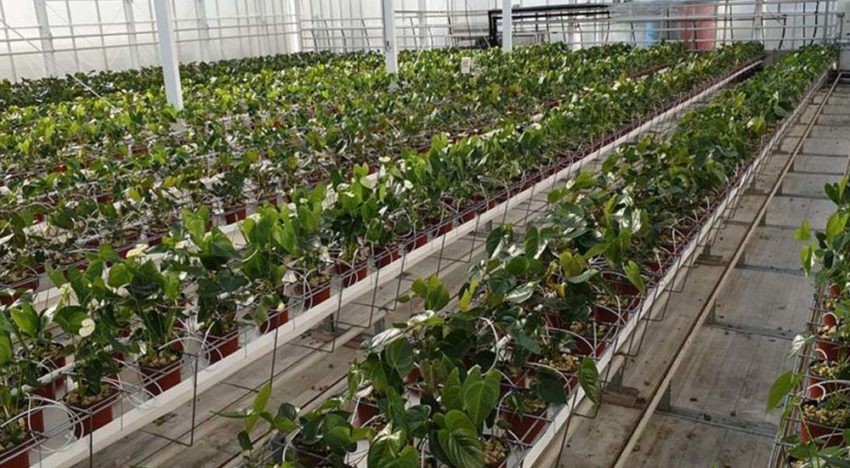
The gas consumption of the cut anthurium crop in the 2SaveEnergy greenhouse at Wageningen University & Research in Bleiswijk was 3.5 m3 per m2 in the first four months, reported researcher Nieves Garcia. The daily temperature never sank below 20oC. She expects that the heat demand in this well-insulated greenhouse will be 10 m3 per m2 annually.
“In the future, we shall not be able to supply the heat demand with fossil-fuel energy. That is why we are investigating the possibilities of a climate-neutral form of cultivation. We use active dehumidification in the summer to harvest heat. Every 20 hours we harvest circa 1 kWh/m of heat that we can store in an aquifer, which we can draw on again in the winter. With this capacity we need to harvest 2,000 hours to meet the expected heat demand in the winter,’ she explained. “On Sunday, June 2, we experienced extremely hot weather for the first time, but the climate was reasonable in the greenhouse.” Using atomisation and a little cooling, the maximum temperature remained at 28oC. For that day about 1.5 liters of water per m2 were required for atomisation.
Good start
The daily temperature is a bit higher than in practice, as is the light intensity of up to 13 to 14 mol per m2. Garcia said, “The crop can take it. It has turned into a ‘hard’ crop with a good colour. Overall, we have made a good start.” In February four different anthurium varieties were planted: Eterno, Calisto, Moments and Midori. The production is now well underway. Flower size and stem length are developing nicely.
High insulation value
The 2SaveEnergy greenhouse has a double-layer greenhouse cover of diffuse glass with a highly transparent film (ETFE), supplemented by a double aluminised screen and an energy screen. This gives this greenhouse concept a high insulation value and low heat demand. These properties make the greenhouse ideal for the cultivation of cut anthurium, with a gas consumption in practice of approx. 20 m3 per m2. About 20% of the energy input is used for dehumidification (via a heat pump system). With Next Generation Cultivation, which involves harvesting the heat along with a reserved CO2 dosing strategy, it must be possible to set up a practically climate-neutral cultivation without additional lighting of cut anthuriums.
Peppers
Researcher Frank Kempkes revealed this spring that the energy input in the pepper crop last year amounted to 9 m3 per m2. Thus, this crop was very successful in energy terms. The production was good, the product quality a bit lower due to misshapen fruits. The cause of the reduced quality is not known for certain, but could have something to do with the continuous ridge ventilation which was not optimal.
Source: HortiNext
Text: Pieternel van Velden.
